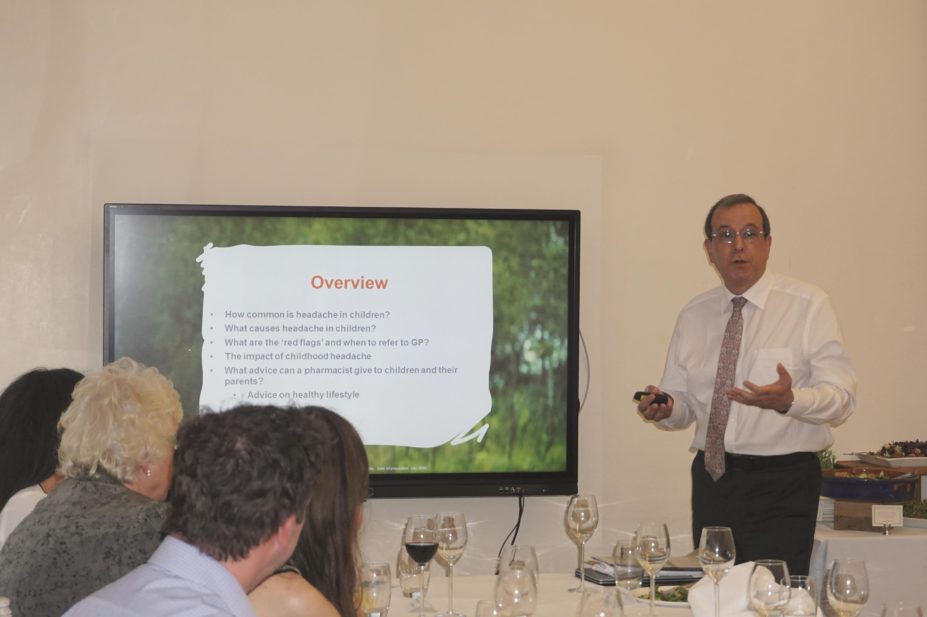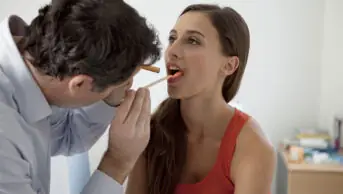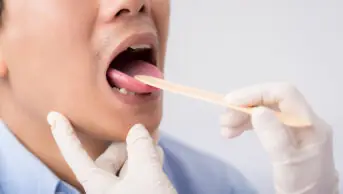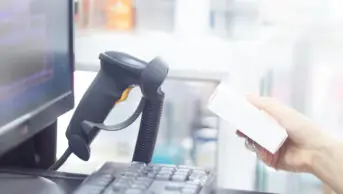
Courtesy of RB
More than a quarter of pharmacists (27.6%) say that they have never spoken to a parent or carer about childhood headache, despite the condition occurring in around 60% of children and adolescents.
The finding comes from a survey conducted on behalf of Reckitt Benckiser (RB), which launched its chewable Nurofen tablet for children in February 2016.
The survey of 666 pharmacist members of the Royal Pharmaceutical Society (RPS), which conducted the survey, found that 12.7% of respondents said that they spoke to a parent or carer once a year about childhood headache; 32.9% said they encountered the condition more than once a year but less than monthly; 7.4% said they spoke about the condition once a month; 9.9% more than once a month but less than weekly; and the remaining 9.5% said they spoke to parents or carers about childhood headache once a week or more.
Speaking during a RB event about childhood headache held in central London on 27 July 2016, Ishaq Abu-Arafeh, consultant paediatrician at the Royal Hospital for Sick Children in Glasgow, who runs a headache clinic, said childhood headache is more common than people think. “I have an extremely long waiting list.”
Research conducted by Abu-Arafeh in 2010[1]
found that up to 60% of children and adolescents are affected by headache at some point. Episodes of tension headache are the most common, affecting 12%–25% of children, while migraine affects 7.7% of children and chronic daily headache affects 1%–2% of adolescents.
In a separate survey conducted by RB among 1,003 UK parents whose children experience headache, which was also discussed at the event, respondents said that the condition mostly affected their child’s mood, but 38% said it affected schoolwork and 23% said their children missed out on activities or trips because of headache.
More than 70% of these parents said that they turn to pharmacists or pharmacy staff for advice when their child has a headache, while 51% said that they seek advice from their GP. Four out of five parents said that they would trust the recommendations given by a pharmacist or healthcare professional when purchasing headache medication for their child.
Abu-Arafeh said that the most important thing to remember when recommending medication is for the child to take the maximum dose of ibuprofen or paracetamol as soon as possible after the onset of symptoms. Products containing codeine should not be recommended, he added.
He also pointed out red flags that should prompt pharmacists to refer a child to their GP, such as acute headache accompanied by fever or confusion, progressive worsening of the headache over days, headaches triggered by coughing, sneezing or exercising, new neurological deficits or personality change and persistent morning headache associated with nausea.
When a child comes into a pharmacy with a parent, Abu-Arafeh advised that it can be useful to ask open questions to the child themselves, in order to get a more accurate picture of their symptoms.
References
[1] Abu-Arafeh I, Razak S, Sivaraman B et al. Prevalence of headache and migraine in children and adolescents: a systematic review of population-based studies. Developmental Medicine & Child Neurology 2010;52:1088–1097. doi: 10.1111/j.1469-8749.2010.03793.x


